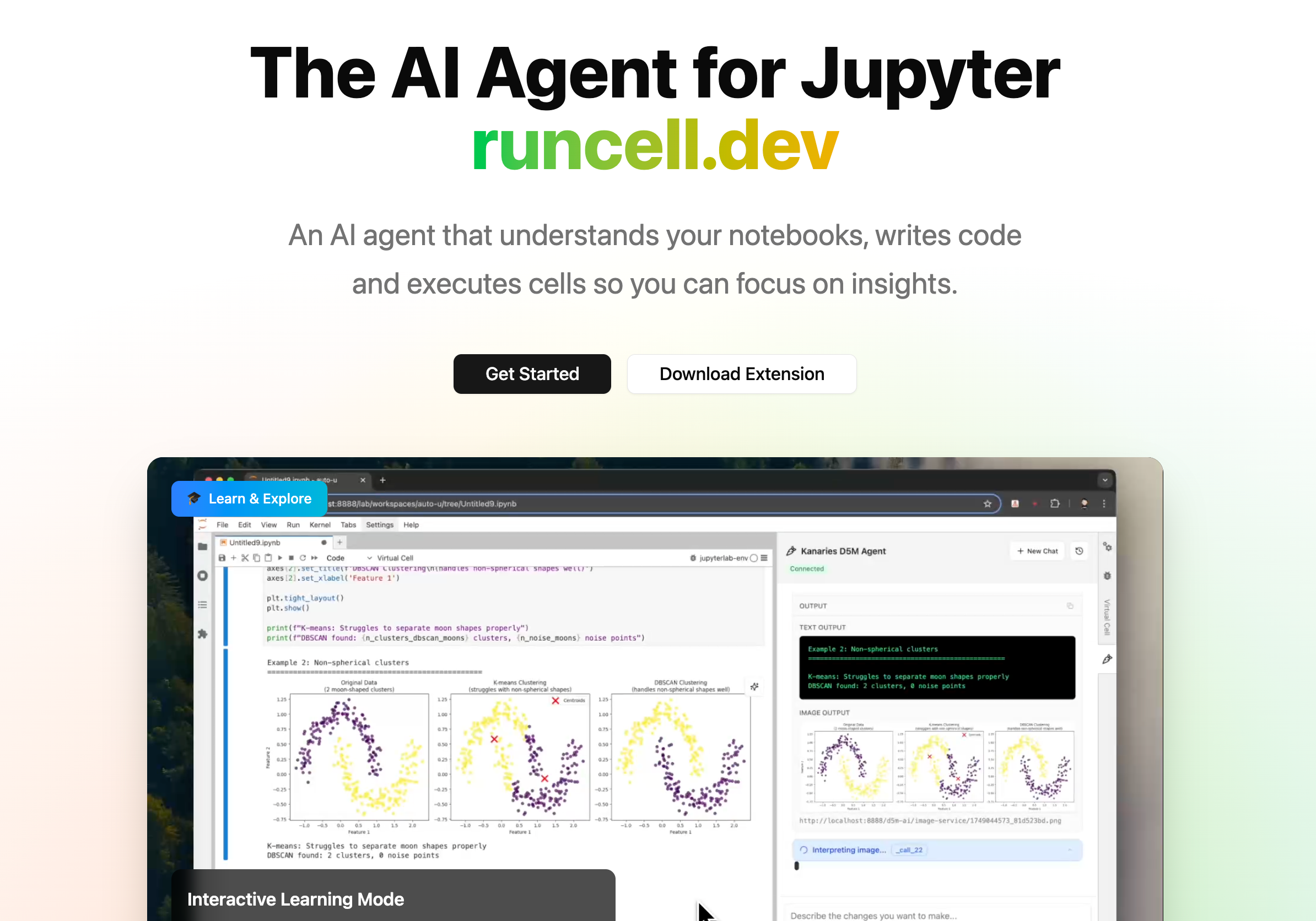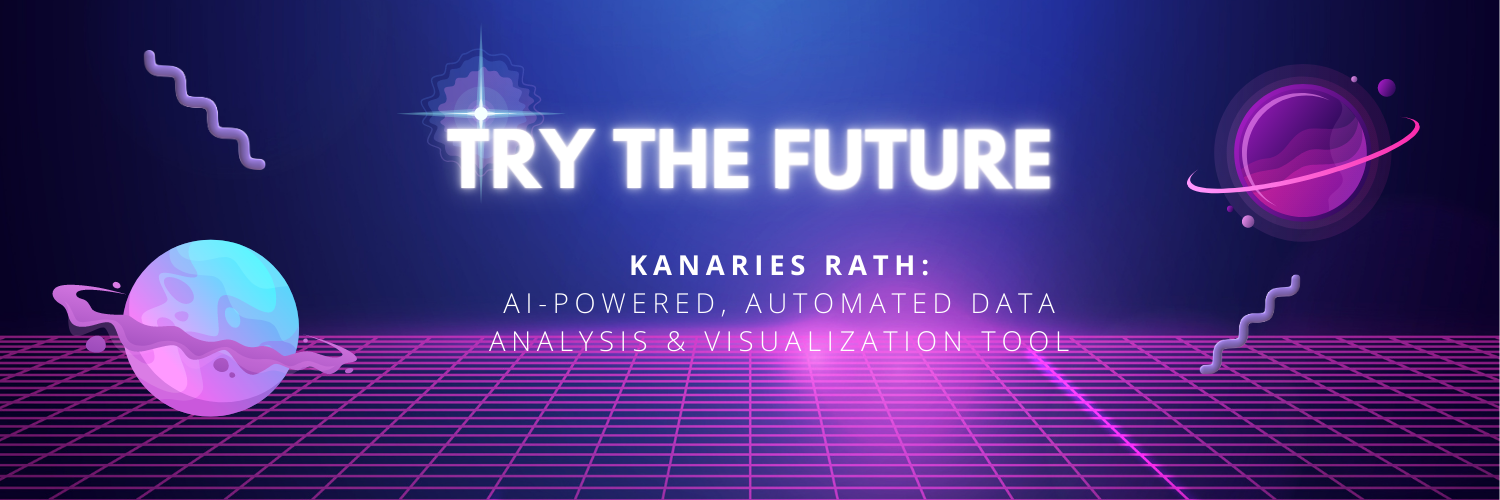Visualize BigQuery Data: Unlocking the Power of Data Analysis and Visualization
Updated on
Google BigQuery, a cloud-based data warehouse, has become a go-to solution for organizations seeking to analyze and store massive amounts of data. To make sense of this data and turn it into valuable business insights, users need to visualize BigQuery data using effective data visualization tools. This essay will explore the world of BigQuery visualization, discussing its benefits, and examining various tools available to help you create engaging, easy-to-understand visualizations. We'll also introduce RATH, an AI-powered, open source data visualization tool that offers a unique solution for BigQuery users.
The AI Agent for Jupyter Notebooks
An AI agent that understands your notebooks, writes code and executes cells so you can focus on insights. Accelerate your data science workflow with intelligent automation that learns from your coding patterns.

The Importance of BigQuery Visualization
Visualizing BigQuery data is a critical step in the data analysis process, allowing users to transform raw data into meaningful visual representations. By using data visualization tools, organizations can better understand their data, identify patterns and trends, and make data-driven decisions. BigQuery visualization empowers users to:
- Create interactive dashboards and reports for stakeholders
- Explore data through tables, graphs, and other visual formats
- Identify correlations and outliers in datasets
- Leverage real-time analytics to gain critical insights
Top Data Visualization Tools for BigQuery
There is a wide variety of data visualization tools available for BigQuery users, each with its unique features and capabilities. Here, we'll discuss some of the top visualization tools and their advantages, as well as how RATH's AI-powered solution offers a unique approach to BigQuery visualization.
Google Data Studio
As part of the Google Cloud Platform ecosystem, Google Data Studio is a natural choice for BigQuery users. This tool allows you to create customizable, insightful reports and dashboards by connecting to various Google products, including BigQuery. With its drag-and-drop interface and real-time data integration, Google Data Studio is a popular choice for those looking to visualize BigQuery data quickly and easily.
Tableau
Tableau is a powerful data visualization platform that supports BigQuery integration. Its extensive range of features and chart types makes it suitable for users with varying levels of expertise. Tableau's cloud platform allows for seamless collaboration and sharing of visualizations, making it a strong contender among BI tools for visualizing BigQuery data.
Tableau isn't the only solution on the market. You might want to explore more open source data visualization tool that works as tableau alterntaives.
Power BI
Microsoft's Power BI is another popular choice for visualizing BigQuery data. This tool supports data modeling and transformation, allowing users to create unified data views and self-service analytics. Power BI's integration with BigQuery enables users to create data-driven visualizations and share them with their teams.
Looker
Looker is a real-time business analytics platform that integrates seamlessly with BigQuery. Its semantic modeling capabilities and Looker Studio, a BI engine for data exploration, provide a powerful solution for users to create and share visualizations based on their BigQuery data.
However, for people who are looking for an ai data visualization tool that is Open Source, Easy to Use, and Affordable, there is another option available:
RATH: AI-Powered, Open Source Data Visualization for BigQuery
RATH (opens in a new tab) stands out from other BigQuery visualization tools with its AI-driven capabilities and open source nature. This automated data analysis and visualization tool simplifies the process of creating visualizations, making it accessible to users with varying levels of technical expertise.
RATH's AI-powered features help users quickly identify patterns, trends, and outliers in their data, saving time and effort when analyzing large datasets. Its intuitive interface and seamless integration with BigQuery make it easy for users to connect to their datasets and start visualizing data. Simply import your data to RATH, and click on the Start Analysis button to get automated data insights.
RATH's Unique Approach to BigQuery Visualization
RATH offers several advantages over other data visualization tools when it comes to visualizing BigQuery data. Some of these unique features include:
-
AI-driven recommendations: RATH's AI algorithms analyze your data and provide suggestions for the most suitable visualizations, helping users create meaningful representations of their data.
-
Open source flexibility: As an open source data visualization tool, RATH allows users to customize the platform to meet their specific needs, as well as contribute to its development and improvement.
-
Automated data analysis: RATH's automated data analysis capabilities save users time and effort by streamlining the process of extracting insights from BigQuery data.
-
Ease of use: RATH's user-friendly interface makes it easy for both technical and non-technical users to create and share visualizations, making it a great choice for organizations with diverse teams.
-
Affordability: RATH provides a cost-effective solution for visualizing BigQuery data, making it an attractive option for businesses of all sizes.
You can create highly customizable charts by dragging and dropping variables to shelves. Watch the following demo video about Exploring the seasonal relationships between registered users and casual users.
Comparing RATH to Other BigQuery Visualization Tools
While RATH offers a unique and powerful solution for BigQuery visualization, it's essential to consider other tools and their capabilities when choosing the right platform for your needs. Here's a brief comparison of RATH and other popular visualization tools:
- Google Data Studio: Google Data Studio's tight integration with other Google products and its real-time data integration make it a popular choice for BigQuery users. However, RATH's AI-powered features can help users identify insights more quickly, giving it an edge in terms of efficiency and ease of use.
- Tableau: Tableau offers a wide range of features and chart types, making it suitable for users with varying levels of expertise. While Tableau is a powerful platform, RATH's AI-driven recommendations and open source nature provide a more accessible and flexible option for BigQuery visualization.
- Power BI: Power BI is known for its data modeling and transformation capabilities, which can be useful for organizations with complex data needs. However, RATH's AI-driven approach to visualization makes it easier for users to create meaningful visualizations and derive insights from their data.
- Looker: Looker's real-time analytics and semantic modeling capabilities make it a strong contender for BigQuery visualization. RATH, however, offers AI-driven recommendations and an open source platform, making it a more accessible and customizable option for users.
Beyond that, RATH has integrated ChatGPT-based tool that allows you to generate data visualizations by using prompts:
Conclusion
Visualizing BigQuery data is critical for organizations looking to unlock the power of their data and make data-driven decisions. With a variety of visualization tools available, it's essential to choose the right platform for your needs. RATH, with its AI-driven capabilities and open source nature, offers a unique and powerful solution for BigQuery visualization. By harnessing the power of RATH and other visualization tools, you can transform your data analysis process to the next-level.
